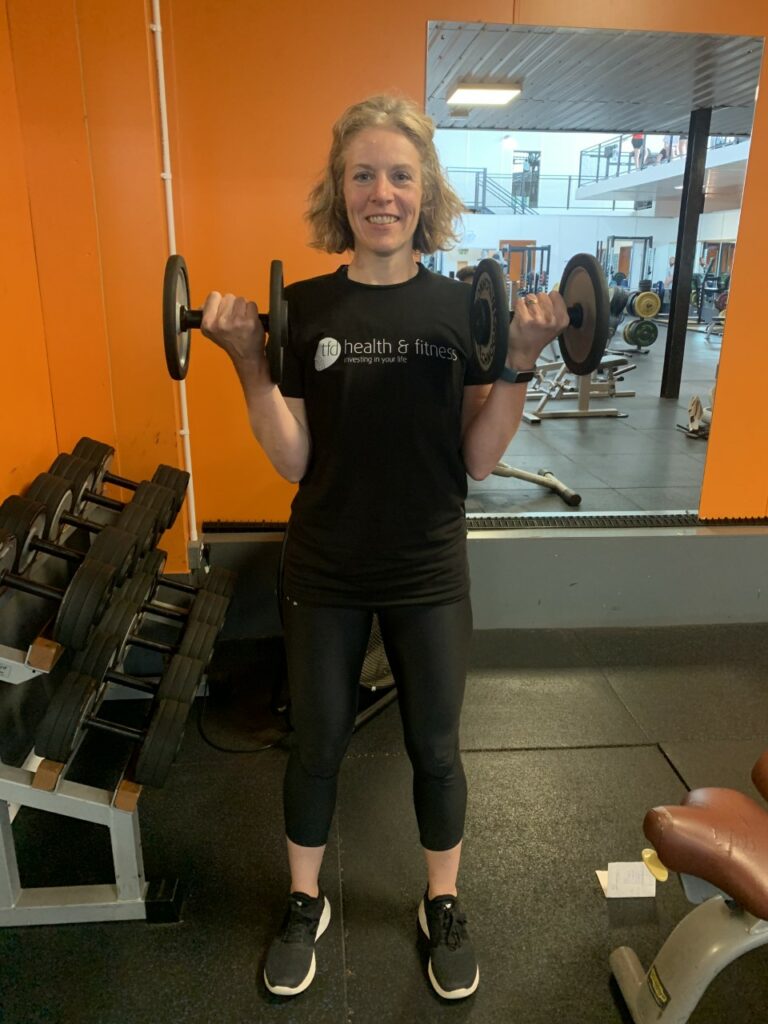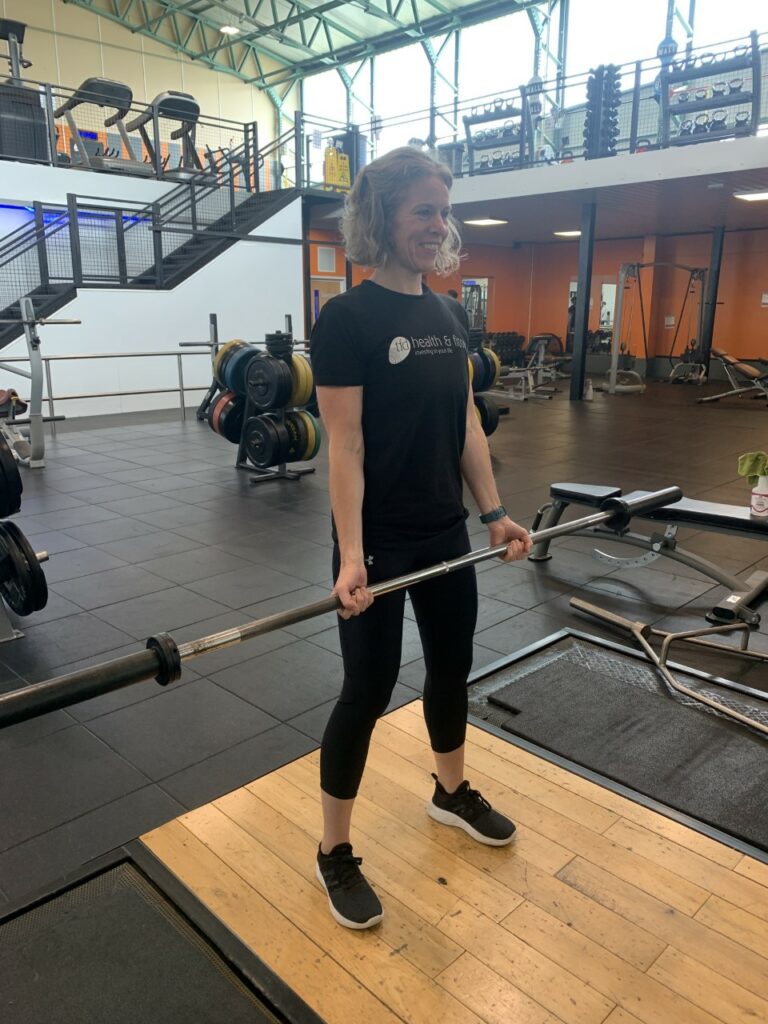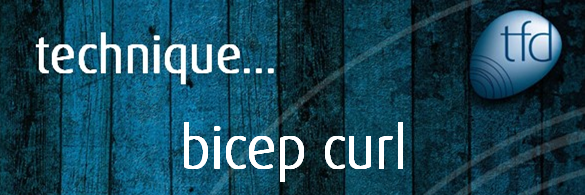The biceps curl is an upper body strengthening exercise, here we’ll take a brief look at the anatomy involved as well as technique and variations on the basic version.
Biceps anatomy
The biceps brachii is a muscle located in the upper arm. It is bi-articular due to the fact that it extends across two joints: the shoulder and the elbow. Also located in the upper arm in the anterior compartment, is the brachialis. The biceps curl also engages the brachio radialis in the lower arm.
When perfoming the bicep curl, the core muscles should also be engaged to provide stability.
Dumbbell bicep curl
Technique:
This exercise can be performed unilaterally (one at a time) or bilaterally (both together). Unilateral exercises, when used alongside a balanced full body programme, are a great tool for addressing muscle imbalances in your body. Unilateral exercises help to isolate muscles and prevent your dominant side overcompensating.
- Decide whether you are going to perform this exercise one arm at a time or both together.
- Select your chosen resistance.
- Position your feet hip width apart, engage your core and slide your shoulder blades down your back.
- Pick up your weights and hold them in front of your thighs with your palms facing away from you (pronated grip) and your elbows into the sides of your body, slowly bring the weight up towards your shoulders creating flexion at the elbow (concentric movement.)
- With control, release the weights back down to the front of your thighs – palms still facing away from you, creating extension at the elbow (eccentric movement.)



Top tips:
- Elbows should stay close to the body throughout the exercise, if you are finding this hard to control, consider adjusting the amount of resistance.
- Don’t rush – move slowly to feel the muscle contract (on the concentric upwards phase) and lengthen (on the eccentric downwards phase.)
- There is no swing in this movement – if you need to swing the weights to bring them up then the weight is too heavy or you need to reduce the number of reps you are performing.
Dumbbell bicep curl variations
There are many variations of this exercise to keep these muscles in tip-top condition without you getting bored: some standing, some seated. With the exception of the preacher bench and barbell curl, all of these variations can be performed unilaterally. Here are some explanations to help you decide how to change up your biceps curl routine:
Kettlebell bicep curl: Using a kettlebell means that there is maximum tension through the muscles on the concentric phase particularly, as the weight is hanging down unlike using a dumbbell.


Barbell bicep curl – greater flexibility and range of motion are needed at the wrist and elbow to perform this variation. Hold the bar with arms extended using an underhand grip at shoulder width on the bar, curl the bar upwards towards the shoulder until you achieve maximum elbow flexion with the elbows staying at the sides of the body. With control, extend the arms and lower the weight back to the starting position.


Hammer curl – to focus more on the brachio radialis in the lower arm, set up the same as a dumbbell bicep curl only hold the dumbbells with your palms facing in towards one another.


Incline dumbbell curl – The angle of this exercise works to isolate the biceps brachii, the best angle for the bench is 45o or 60 o (each notch on the bench represents 15o.) For good form, secure yourself to the bench by engaging the core and ensuring that the shoulders are pulled back, the triceps at the back of the arm are engaged and the wrists are pulled slightly forwards as you release the arms towards the floor whilst holding the dumbbells.


Zottman curl – to increase focus on the brachio radialis in the lower arm choose the Zottman curl working with a slightly lighter weight to protect these muscles. Set up as a basic dumbbell curl, however at full flexion with the dumbbells at the shoulder, rotate the wrists so that the palms are now facing towards the floor and the lower arm muscles are engaged to lower the weights with control.


Seated concentration curl – a really good choice for making sure you recruit the biceps properly and work with good form. Sit on a bench at a height which allows you to bend your knees to 90o with your feet flat on the floor. Holding the dumbbell in your right hand, place the back of your upper arm on the inner part of your right thigh with your arm fully extended holding the weight off of the floor. Take your time to curl the weight up towards the shoulder pausing at the top and squeezing the biceps then slowly lower back to the start.


Preacher bench bicep curl – use a barbell, dumbbells or an E-Z bar at a lighter weight than a basic bicep curl due to the unstable nature of your body position on the bench. Position yourself with your armpits at the top of the slanted pad and your feet flat on the floor. Hold the weight using an underhand (supine) grip. Curl it up keeping your upper arms on the bench.


Including other muscles:
Try using a cable machine to add work in the deltoids and pectorals or a cross-body dumbbell curl for added pectoral work.
For help or advice on any of these exercises just ask one of the team and they will be more than happy to help!

